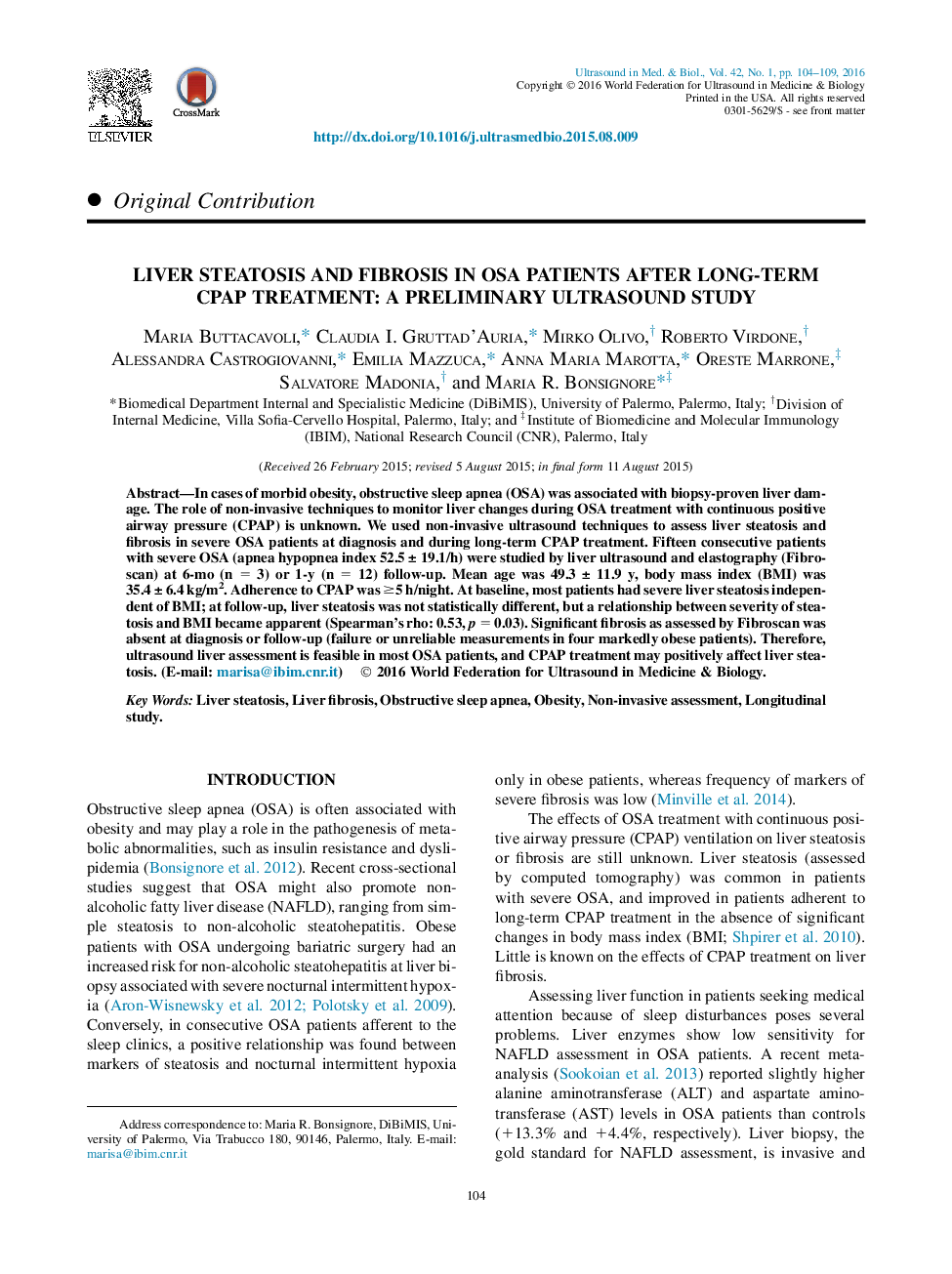| Article ID | Journal | Published Year | Pages | File Type |
|---|---|---|---|---|
| 10691088 | Ultrasound in Medicine & Biology | 2016 | 6 Pages |
Abstract
In cases of morbid obesity, obstructive sleep apnea (OSA) was associated with biopsy-proven liver damage. The role of non-invasive techniques to monitor liver changes during OSA treatment with continuous positive airway pressure (CPAP) is unknown. We used non-invasive ultrasound techniques to assess liver steatosis and fibrosis in severe OSA patients at diagnosis and during long-term CPAP treatment. Fifteen consecutive patients with severe OSA (apnea hypopnea index 52.5 ± 19.1/h) were studied by liver ultrasound and elastography (Fibroscan) at 6-mo (n = 3) or 1-y (n = 12) follow-up. Mean age was 49.3 ± 11.9 y, body mass index (BMI) was 35.4 ± 6.4 kg/m2. Adherence to CPAP was â¥5 h/night. At baseline, most patients had severe liver steatosis independent of BMI; at follow-up, liver steatosis was not statistically different, but a relationship between severity of steatosis and BMI became apparent (Spearman's rho: 0.53, p = 0.03). Significant fibrosis as assessed by Fibroscan was absent at diagnosis or follow-up (failure or unreliable measurements in four markedly obese patients). Therefore, ultrasound liver assessment is feasible in most OSA patients, and CPAP treatment may positively affect liver steatosis.
Keywords
Related Topics
Physical Sciences and Engineering
Physics and Astronomy
Acoustics and Ultrasonics
Authors
Maria Buttacavoli, Claudia I. Gruttad'Auria, Mirko Olivo, Roberto Virdone, Alessandra Castrogiovanni, Emilia Mazzuca, Anna Maria Marotta, Oreste Marrone, Salvatore Madonia, Maria R. Bonsignore,
